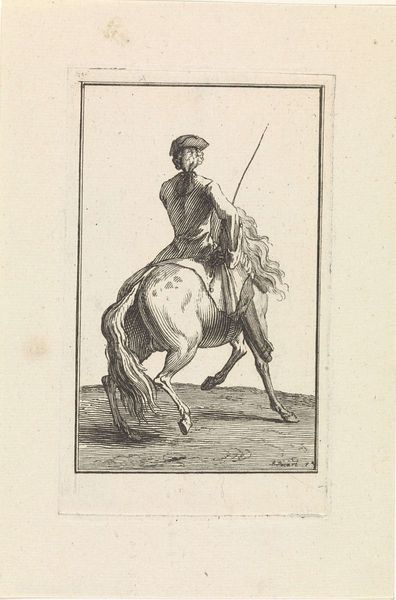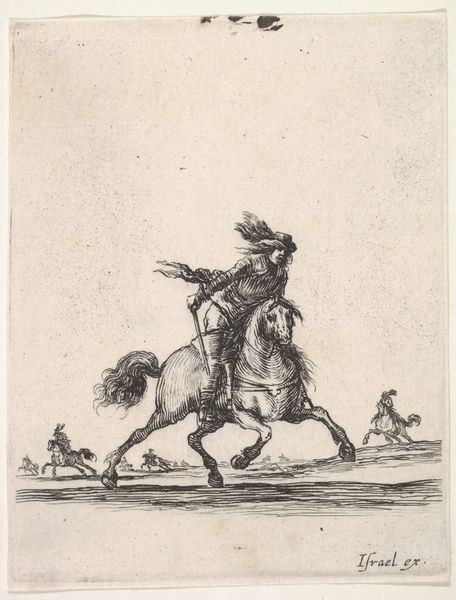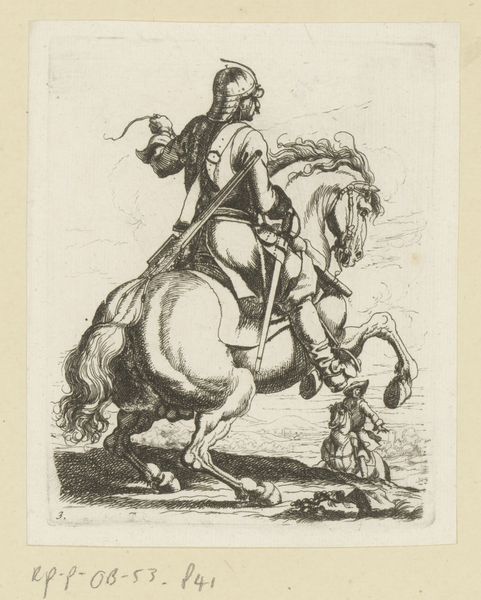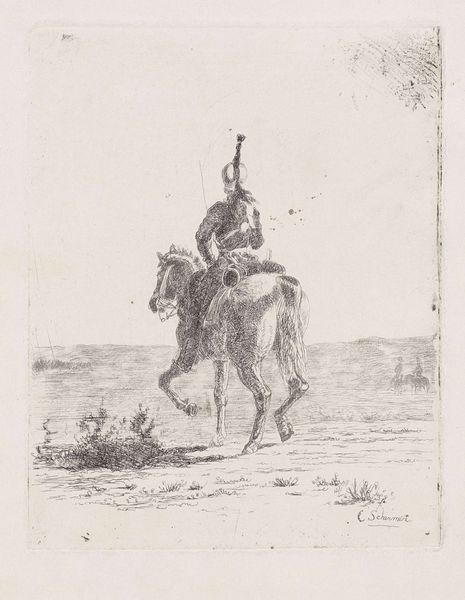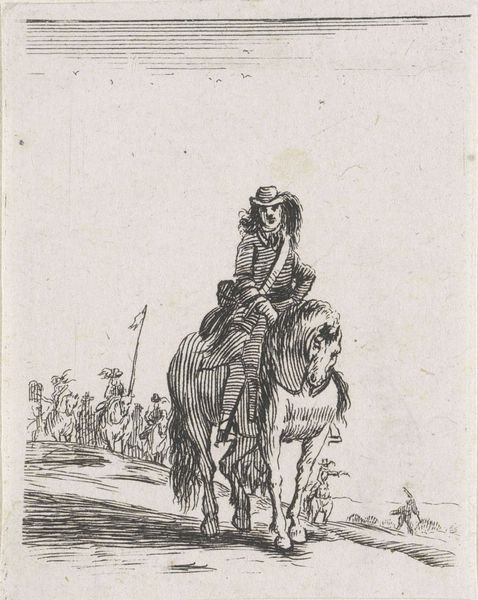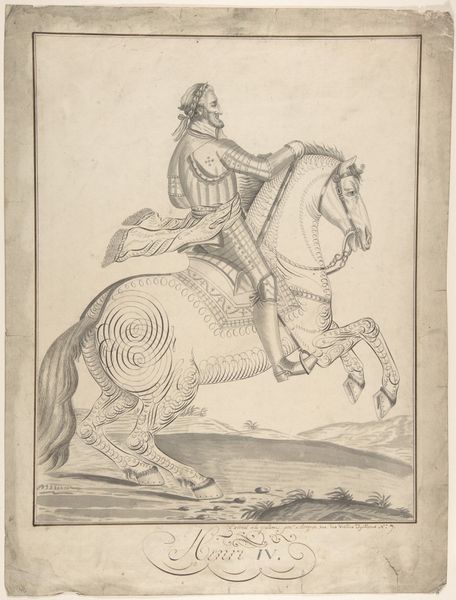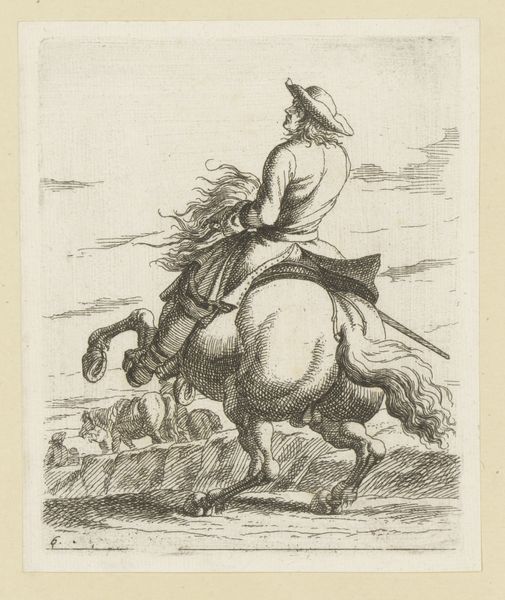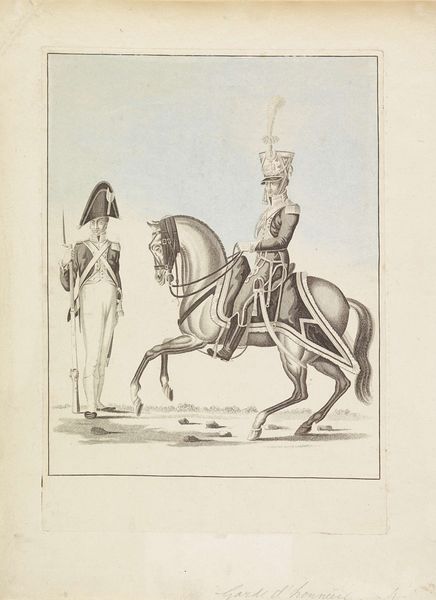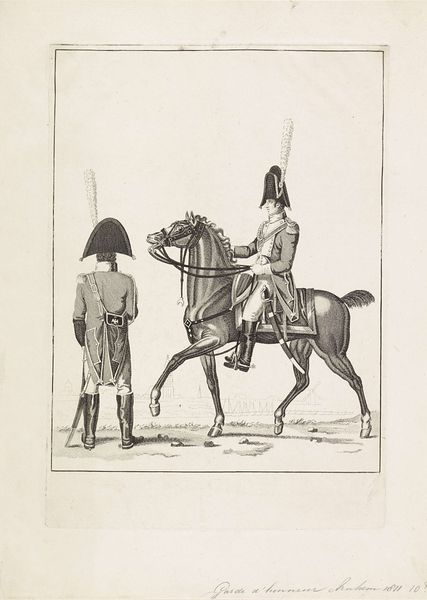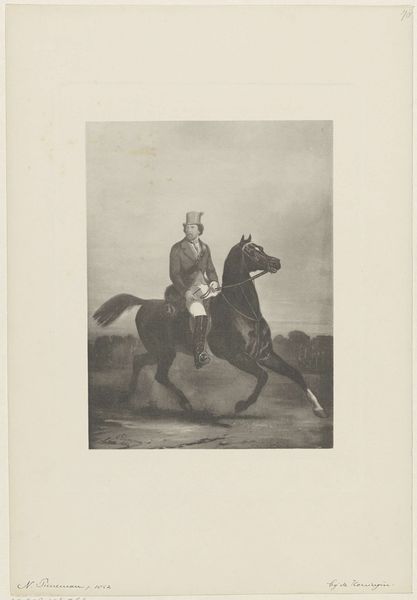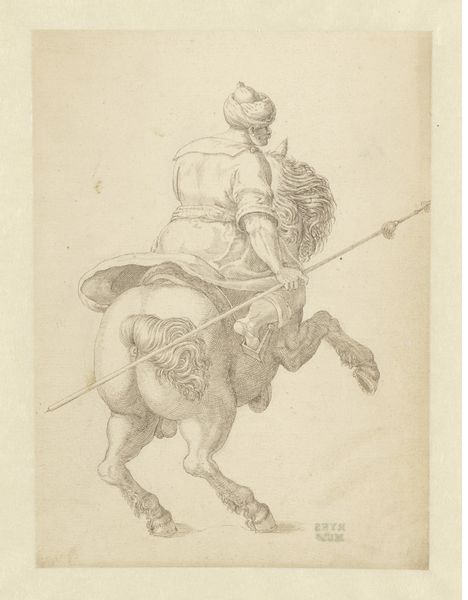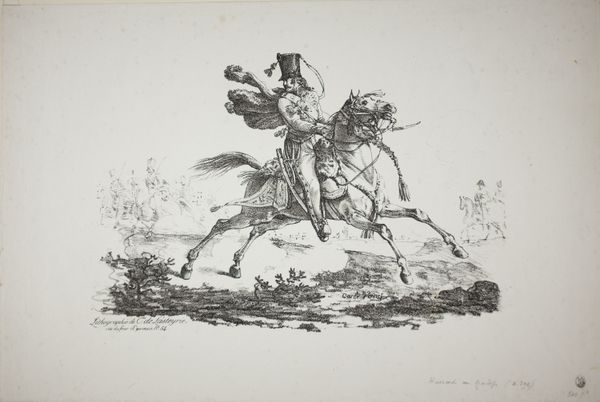
drawing, print, pen, engraving
#
drawing
# print
#
pencil sketch
#
figuration
#
romanticism
#
pen-ink sketch
#
pen
#
history-painting
#
engraving
Dimensions: height 317 mm, width 242 mm
Copyright: Rijks Museum: Open Domain
Editor: This is "Lichte dragonder, 1820-1825" by Joannes Bemme. It's a print, possibly an engraving, depicting a light dragoon officer on horseback. It has such energy, a real sense of forward momentum despite the stillness of the medium. What catches your eye most about this piece? Curator: The linear precision and compositional balance are quite striking. Notice how the artist uses the horse's dynamic pose—its outstretched legs and flowing mane—to create a sense of diagonal movement, which is then counterbalanced by the verticality of the officer’s figure and the tall hat. Editor: It's almost like the diagonal pose of the horse shows direction and momentum but I see that the straight, rigid posture of the rider in contrast creates balance. Why do you think Bemme composed it this way? Curator: The contrast between the dynamic horse and static rider contributes significantly to the work's formal interest. Consider also the relationship between line and form here. The clean, sharp lines create a sense of detail and realism, while also highlighting the flatness of the picture plane. Editor: So, it's not just about *what* is depicted, but *how* it’s depicted that matters most? The formal language of the print creates interest through contrasts and balance of line and movement. Curator: Precisely. Understanding these intrinsic elements helps us to interpret and appreciate the artwork beyond its immediate subject matter. The interplay of line and form contributes to the image’s success. Editor: I've definitely gained a new appreciation for how the artist used lines and position of the figures to direct the observer's eye. Thank you.
Comments
No comments
Be the first to comment and join the conversation on the ultimate creative platform.
